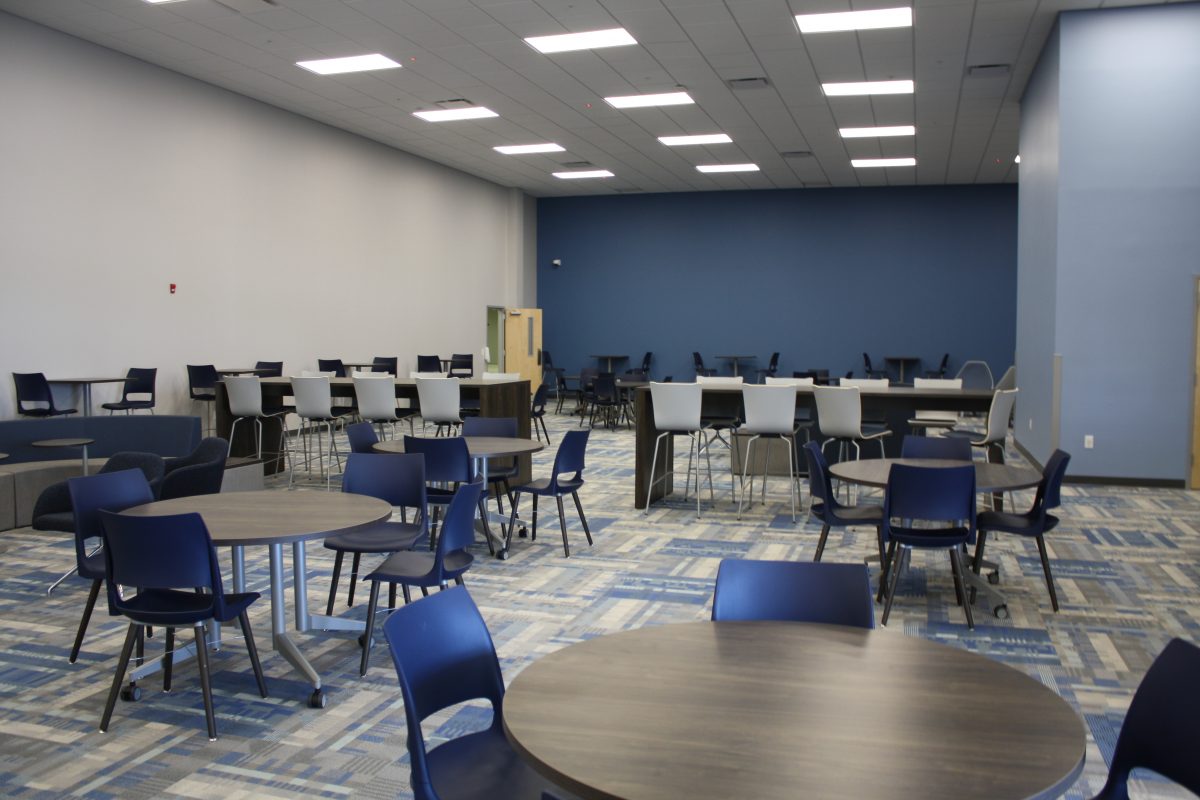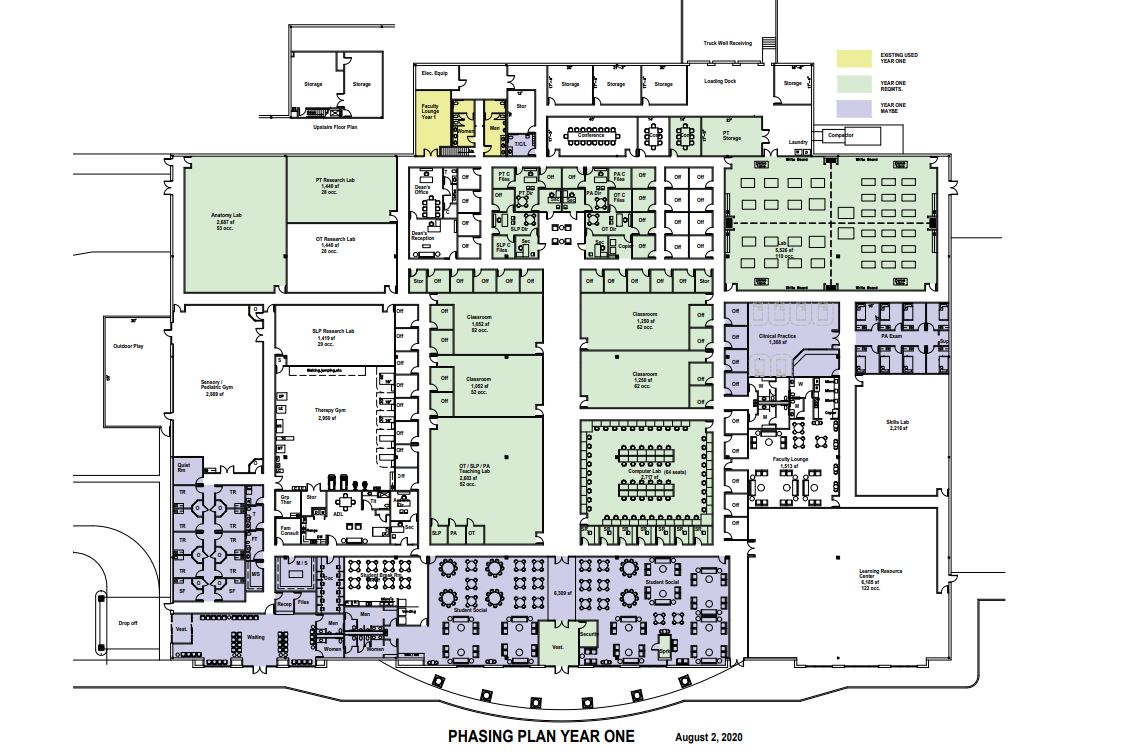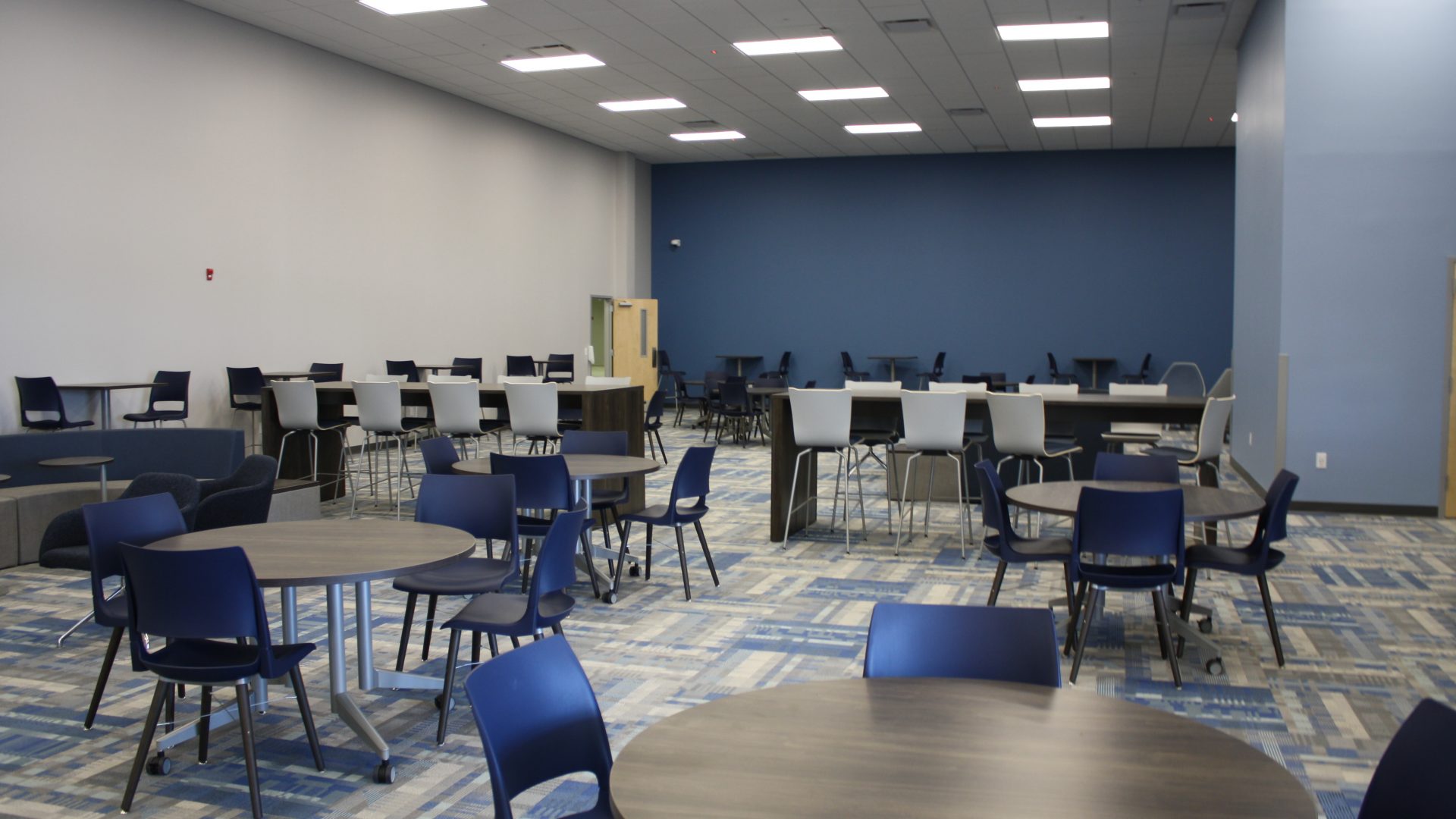
The first phase of renovations for the College of Health Science’s has been completed.
Crews with Marshall Design-Building LLC began working on the renovations in October 2020 to transform the former Burlington Coat Factory building into a space for Faulkner’s new College of Health Sciences.
On June 25 Faulkner University President Mike Williams announced the 13-acre purchase of the Montgomery East Plaza Shopping Center and renovations began a few months later.
“We won’t have classes in that facility until the fall. Once we do, it will certainly be a positive new asset to the institution to help propel our center for health sciences,” said Faulkner President Mike Williams.
Faculty will begin moving into their new offices over the summer.
Phase one of renovations included the lobby, computer lab, teaching lab, classrooms, offices, anatomy lab, physical therapy research lab, other lab areas, clinical practice area, physician assistant exam area, and community clinic.
To see photos of the progress throughout the renovation, click here.
In October, crews began demolishing the interior floors and walls to create 85,000 square feet of empty space. They began laying down wiring and water lines in the floors, installing duct work overhead and electrical lighting. Then, metal framing for the walls were positioned to create a layout of the spaces to include a lobby, labs, research center, classrooms, offices and more. By the end of December, crew members were installing insulation and drywall.
January through April, crews were nearing the end of renovations with installations of flooring and carpet, doors, fresh paint and finally assembling furniture for the offices, labs and lobby areas.
Later renovations will also include all new frontage and signage. Subsequent renovations will be completed in phases to include a therapy gym, speech-language pathology research lab, sensory and pediatric gym, occupational therapy lab, a learning resource center, skills lab, more offices, a daily living suite and student and faculty lounge areas.

Description of Spaces
Classrooms– these areas serve the students and faculty in all CHS programs. The classrooms are where a majority of didactic coursework is taught. Classrooms are equipped with a range of technology, such as Apple TVs, projectors, computers and ECHO 360 to enhance teaching and learning.
Student area– student-focused space encouraging congregation, communication, and collaboration. It is a multi-space where students can study, hold informal meetings, eat meals, and relax between classes. The intent is to establish a culture in which students feel a sense of belonging.
SLP, PT, and OT Research Labs– rooms where faculty conduct
their ongoing research agendas. Selected students such as graduate research assistants will be afforded the opportunity to assist faculty with these research studies in order to learn research skills.
Offices-The intent is to inter-mingle SLP, PT, PA, and OT faculty
together. Collaboration is the mantra and inter-departmental
communication is not going to occur if each department is operating within its own silo.
PT/OT Teaching Labs– Dedicated to PT and OT students to learn
and practice clinical skills. One lab will be set up as an orthopedic lab, while the second one is a neuromuscular lab.
Anatomy Lab– Houses life-sized virtual touch-pad cadaver tables
for CHS students that have been shown to enhance practical learning in anatomy and physiology. Also holds numerous anatomy models, prosection kits and other instructional materials.
Activities of Daily Living Suite– An apartment simulation laboratory will provide opportunities for functional status research for patients with limited independence and functionality. It will also provide home-based healthcare simulations and focus group research. This space can be used by
students, educators, and researchers across multiple disciplines.
Learning Resource Center– This is the CHS Library. It will house
specialized books and medical journals, as well as provide study space and research resources.
Clinical Practice/ Exams– These are medical simulation labs where students practice basic medical skills prior to treating real patients. One side of the simulations lab looks like an emergency room, while the other side is set up like a doctor’s office.

